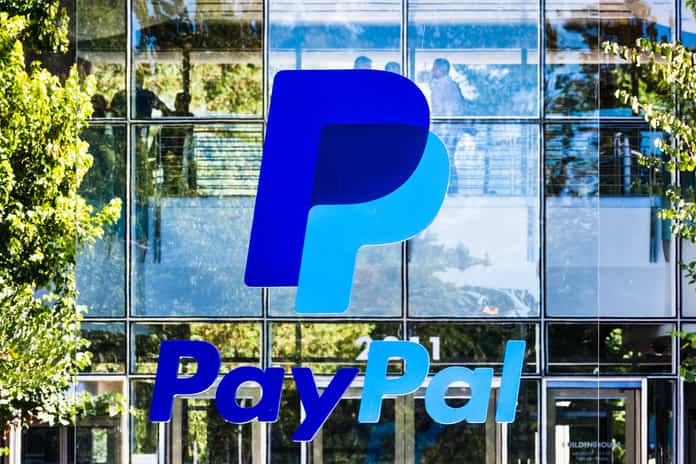Shares of Salesforce Stock (NYSE:CRM) dropped almost 7% after the market closed after the company reported mixed results for FY3Q23 (C3Q22) and poor guidance for FY4Q23 (C4Q22). Salesforce’s revenue of $7.8 billion (up 14% year over year and 19% in constant currency) and adjusted earnings per share (EPS) of $1.4 were better than most people expected. Even though Wall Street expected a 13% rise, the Current Remaining Performance Obligation (cRPO) increased 11% year over year (15%) to $20.9 billion. if you take out the effects of foreign exchange). Even though management predicted that Q4 revenue would be around $8 billion (+10% YoY/13% CC), which is in line with what Wall Street expected, cRPO growth was predicted to be 7% (10% CC) instead of the 11.7% consensus, which suggests that top-line growth will be slower in the future.
So, what exactly is going on? In a challenging macroeconomic environment where industries like technology, e-commerce, and financial services are growing slowly or not at all, consumers are changing how they act. Many Salesforce products are affected by deals taking longer to close, and company CFOs are looking closely at every expense item. For example, the growth of the Sales and Marketing Cloud is slowing because companies are hiring fewer people and spending less on marketing. Normalizing how e-commerce works is also affecting Commerce Cloud. During Cyber Week, 14% more people looked at commerce pages, but only 2% more orders were made.
Co-CEO Bret Taylor also announced that he was leaving, so CEO and co-founder Marc Benioff is now in charge. The first C-suite executive to leave was Chief Strategy Officer Gavin Patterson at the beginning of November. This is the second C-suite executive to quit.
Since Growth Is Slowing, It’s Essential to Make Money
Like many of its software competitors, Salesforce benefited greatly from the pandemic, which forced businesses to start digital transformations immediately. After a big IT investment cycle, customers are cutting back on criticalTo get ready for a slower environment, focus on areas like marketing, sales, and commerce. This shouldn’t come as a surprise.
Even though the change seems more cyclical than permanent, Salesforce is still a reasonably mature company, since its top-line growth is likely to reach 25% or more with a widespread acceleration of digital transformation. As investors start seeing Salesforce as a company with growth in the low double digits, profitability becomes more critical as a source of value. Even though the goal of management is to increase the operating margin to at least 25% by FY26, Salesforce could do better in this area (C25).
Management thinks that the non-GAAP operating margin will be 20.7% in FY23, while the GAAP operating margin will be 3.8% in FY23. The nearly 17-point difference between GAAP and non-GAAP EBIT margin is primarily due to stock-based compensation (SBC). SBC makes up more than half of the company’s EBIT margin.
In FY23, SBC is expected to earn $3.26 per share, 66% of the $4.93 non-GAAP EPS. Non-GAAP net income for FY23 is expected to be in the range of $4.9 billion, which is about a 16% net margin. On the other hand, GAAP net income of $560 million is only a 1.8% net margin. From the point of view of earnings quality, it takes a lot of work to think of Salesforce as a high-margin business.
Silicon Valley has been used to getting analysts to ignore SBC when figuring out how much money a company makes for a long time. When sales were growing quickly, this wasn’t a problem because investors could explain their choices by saying that the business could “one day become superbly profitable.” As a low-teens grower, Salesforce still has a lot of work to do to improve its bottom line. Call me old-fashioned, but Warren Buffett is right about SBC.
“If options aren’t a form of compensation, what are they? If compensation isn’t an expense, what is it? And, if expenses shouldn’t go into the calculation of earnings, where in the world should they go?”
What About Salesforce Stock?
Salesforce has gone from rapidly growing to a market leader, even if it doesn’t make a lot of money. The market will eventually switch from valuing stocks based on price to non-GAAP EPS to valuing stocks based on price to GAAP EPS. For FY24 (C23), the Street expects revenue of $34.9 billion, up 12.6% from the previous year, and GAAP EPS of $1.38. At the time of writing, the share price was $145, suggesting a forward P/E of more than 100x.
There’s probably a good reason why the valuation is at an all-time low, even though it looks “reasonable” at 25.6x FY23 non-GAAP EPS compared to 60–70x during the pandemic. Even though some analysts think the stock can’t be “downgraded” because it has such a low multiple, I still see a stock that’s priced too high and could go down further.
Overall, it’s best to stay away from Salesforce, which has growth in the low teens and barely makes money. It’s unlikely that another shock from the outside will cause a massive wave of digital transformation, but valuation may improve when markets think there’s a high chance that interest rates will drop to zero. Even though Salesforce stock has fallen 43% since the beginning of the year, there are better opportunities.
Featured Image – Pexels © Lex Photography

















